Notre Dame, Easter 2018 in Paris was something special — and it will be again —when the damage from the fire has been restored along with a new roof and spire. We celebrated Easter Sunday with the Gregorian Mass at the famous cathedral, before setting off to walk the medieval pilgrimage route known as the Camino de Santiago.
There were very few tourists in the side galleries of the cathedral – there was respect for the religious service and joy in the music — from both the singing and the magnificent C18th organ.

The Cathedral has stood for 850 years – one of the great medieval buildings. And it has suffered damage before. After the French Revolution, the building was allowed to fall into neglect, and was close to collapse until, in the mid 19th century a project was instigated to rebuild part of the roof, and install a new spire – larger than the original.
The medieval master builders did some inspired design work. Previously, the Romanesque buildings were dark heavy stone edifices, but with improvements in glass making and precision stonework, Notre Dame was more like a stone lacework, enabling huge swathes of stained glass to provide a truly awe-inspiring miracle of light. The stone vaulting was designed to allow the roof to burn while preventing the fire from entering the main part of the building – and for the most part it worked.
The use of flying buttresses meant that the forces generated by the roof could be redirected to the ground with (relatively) lightweight stone arms holding the walls in place. And the gaps between and through those buttresses allowed light to pass unimpeded into the interior space of the nave. In addition, the buttresses enabled the walls to be built tall, so that human scale was dwarfed by the vast space seemingly reaching upward to the sky.
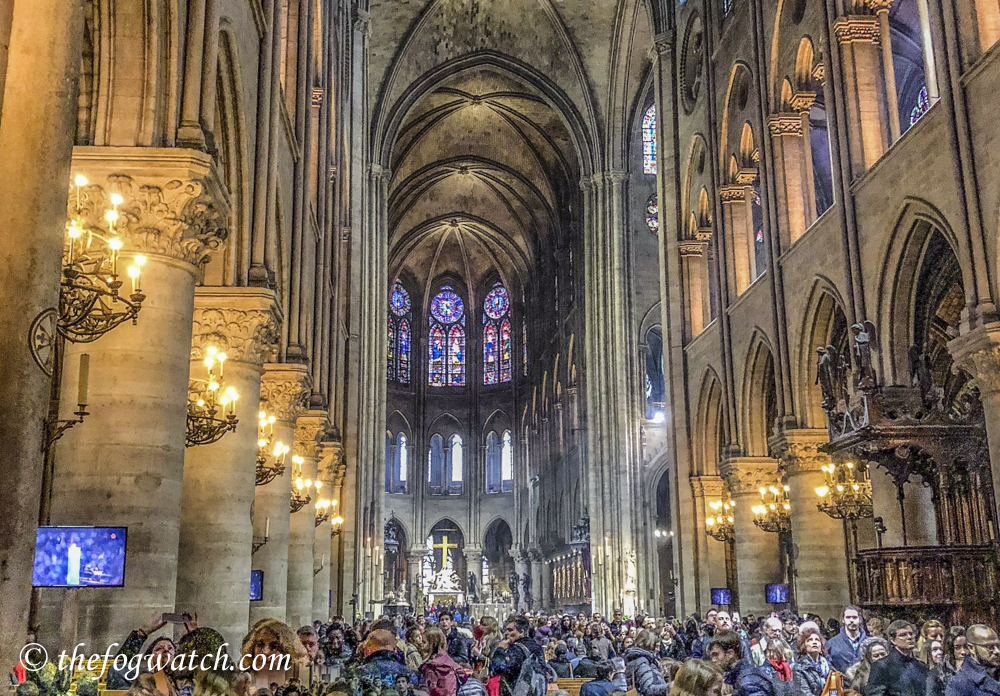
The combined effect of spectacular space, a rainbow of brilliant light through the stained glass, the smell of incense and the sound of choir and organ was a multimedia extravaganza designed to inspire anyone who experienced it. And how much more would have been the effect on those in medieval times who lived in small dark wooden houses and passed through dingey muddy streets to experience the spectacle of Mass.
Whether you are a person of (any) faith or not, the space is an inspiring one. The philosopher Alain de Botton, in his book ‘Religion for Atheists’, points out that there is value in having a weekly reminder of your ethical and moral compass, of taking regular time out from your daily routine to reflect on one’s conduct, and set the course for the coming week.
Businesses undertake a ‘weekly review and plan’ (WRAP) session in order to make sure they are still on course with their program of work. So too, it is useful to take some time at a personal level each week, not just to review financial targets and plans, but also to review our behaviour towards others – including on social media – and consider whether we might have been kinder, or more helpful, or behaved in a more ethical manner towards others.
One of the reactions to the Notre Dame fire I have seen emerging on social media, relates to the speed with which individuals, businesses and nations were inspired to pledge large sums of money towards the repair of the cathedral, with comments relating to how that money could perhaps be better spent helping people or animals in distress, or to address big issues, like climate change, poverty and war. That perhaps in this secular and materialistic age, the time has passed when we need such an anachronistic relic of an age in which religious belief and superstition stood in for science and pragmatic life.
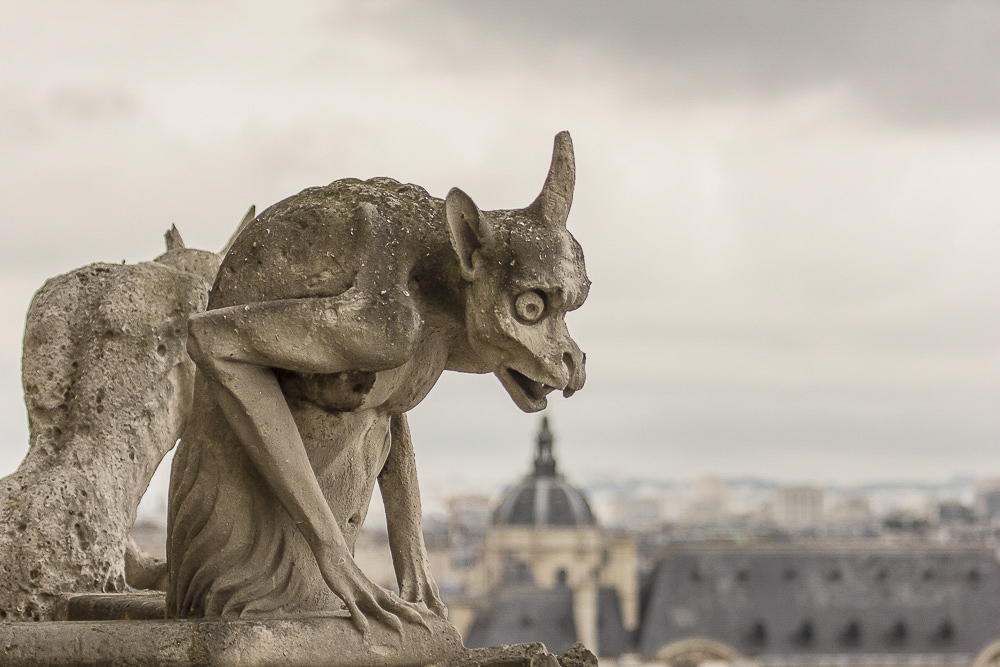
So why should we spend possibly a billion dollars on repairing an 850 year old meeting hall to help out an organisation with a globally tarnished reputation? It’s just a pile of stones isn’t it?
At a material level that’s exactly what it is. But those who argue that it’s a waste of money have missed two important and related points.
The first relates to the equivalence fallacy. This is the fallacy that value and money are equivalent and interchangeable. The best way to see this, is when we work for wages.
We willingly exchange life-time for wages in order to buy goods/shelter etc, but we can’t buy that life back – and yet we still go out to work and buy the goods, including the TV, the smart phone etc. And we also pay money (exchange life-time) so that we can attend sporting events, concerts, theatres and art musuems.
We could, of course spend every cent not otherwise used to feed and shelter us on helping to provide that comfort and security for others. Yet we don’t – even those who argue that the money raised for Notre Dame should be spent elsewhere — are arguing that case on their computer or smart phone that is not essential for their own survival.
Beyond the lower levels of Maslow’s hierarchy of needs, (physiological requirements, safety) — which is by no means universally achieved — there are three other needs that relate to our cultural wellbeing (love and belonging, feeling valued for who we are, and our sense of purpose and moral values and ethical behaviour towards others). And these are needs that lift us from survival to civilisation and culture. They are those — often intangible — things that inspire us to be better human beings, that inspire a sense of community and belonging to a group, a culture, and to that grand club we call humanity. We long to feel connected.
Ultimately, there is no material equivalence for life, but nonetheless, there is a perhaps a value to be placed on culture, otherwise, what is life worth living for?
To put this in perspective, that billion euros would buy around half of one modern naval submarine, or 10-15 advanced fighter planes designed to deprive people of life in the most efficient way possible. Yet we happily pay our taxes so that we can collectively feel safer, more secure, by making life less secure for others.
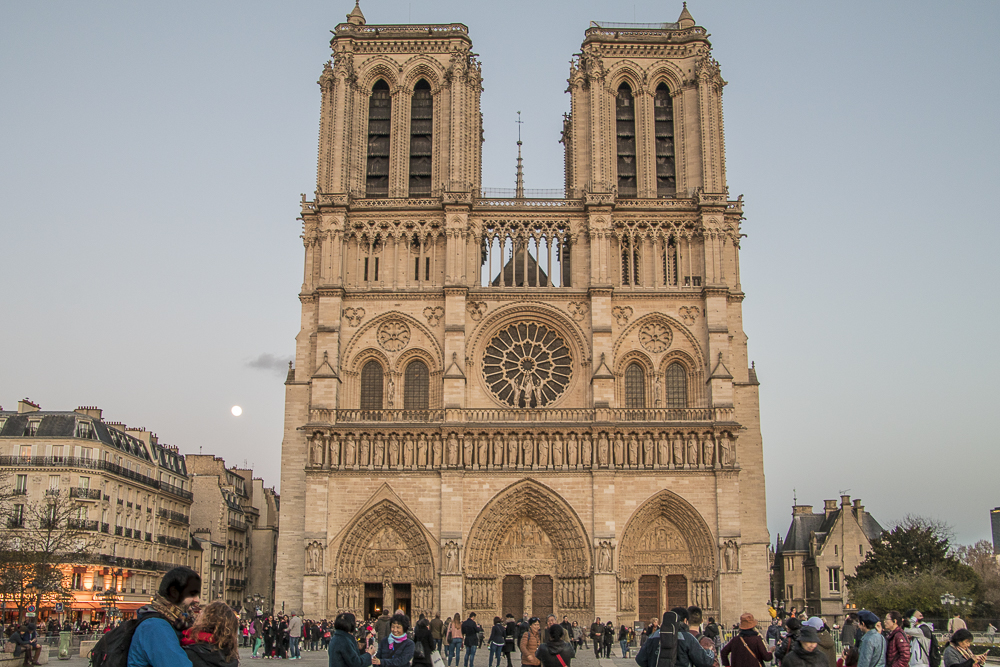
And this brings me to the second point. Notre Dame is not just any old pile of stones, it is an icon – a symbol of our capacity to reach out beyond our tiny lives, to something greater than ourselves. After the Eiffel Tower and the Louvre museum, Notre Dame was the third most visited place in Paris last year. It brings together people of all faiths, because it is a symbol of human achievement, a symbol of hope, and a reminder to be mindful of our ethical and moral compass.
As the roof on the cathedral burnt and the spire collapsed, crowds gathered. And they sang – underlining their sense of community, and bearing witness to the possible loss of something so symbolically important to their sense of humanity that they came together to share that sense of loss. They were not taking selfies – for the most part, they were linking arms and singing songs of hope and prayer and just wanting to be with each other, tourists and Parisians alike.
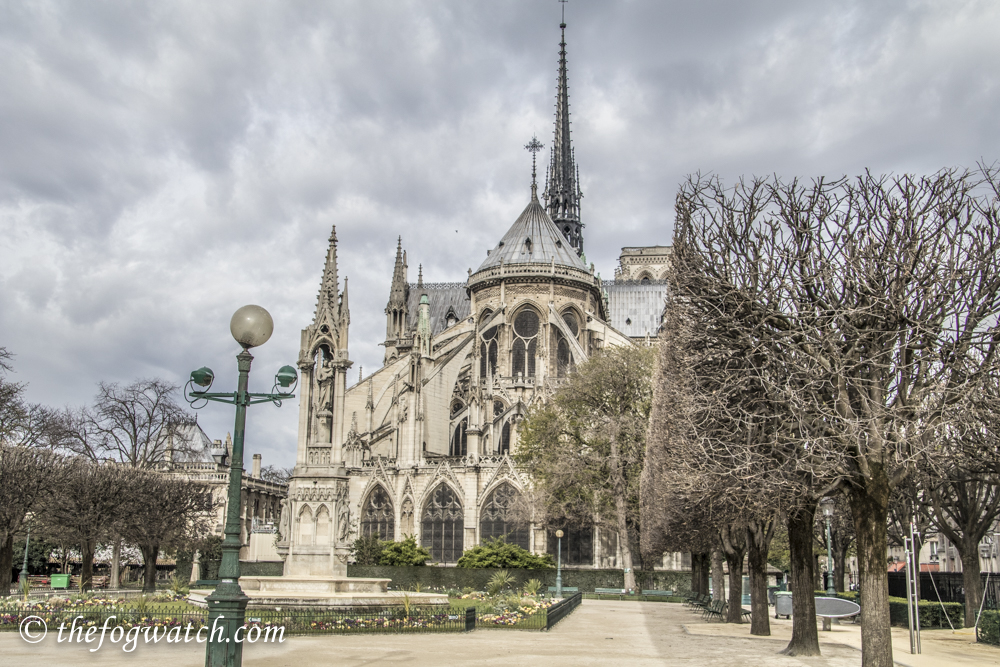
Those who designed the cathdral did not live to see it’s completion, yet they worked to the best of their ability and achieved beyond what was thought possible at the time, sustained by the knowledge that their legacy would endure as a symbol of hope to inspire future generations across the world.
So why not buy the hope embodied in the 200 years it took to build a cathedral and the belief encoded in that building that we are more than our small individual lives, along with the aspirations of our civilisation to rise above our petty differences and reach out to our fellow human beings.
Personally? I’m pretty agnostic about the concept of a personal deity, yet when you walk into a place like Notre Dame, you cannot but reflect on the way we reach out for something greater than ourselves. For me, that is why it is worth repairing Notre Dame. It is a place that connects us, not only with Paris, but with ourselves and our humanity.

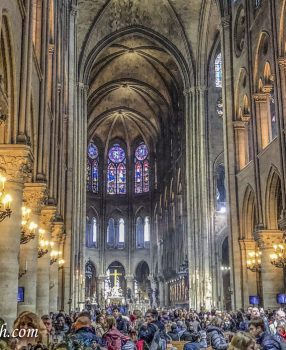
Nice summation of what the catheral means to the world. It will rise again just like the other war ruined churches, palaces etc of Europe which were restored by wonderful crafts people. Don,t weep for Notre Dame.
Thanks Tim – yes France and Europe have a great number of skilled artisans well able to restore the cathedral to its former glory
You certainly have a way of expressing the
thoughts of most folks that have stood in front
And then spent time inside this spectacular place, building, monument, cathedral.
Thanks Jerry
Thanks John – yes it’s a pretty special place
Thank you, Jerry, for this wise and confirming article.
Thanks Anneliese